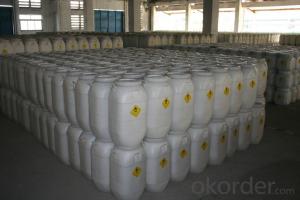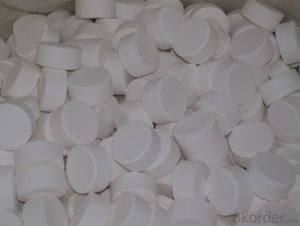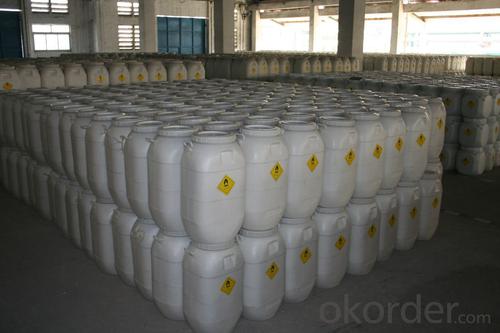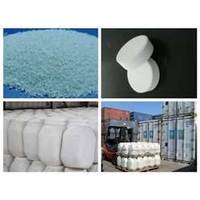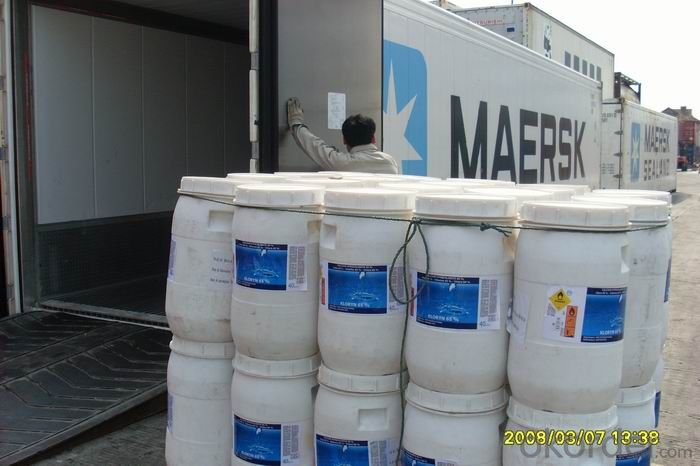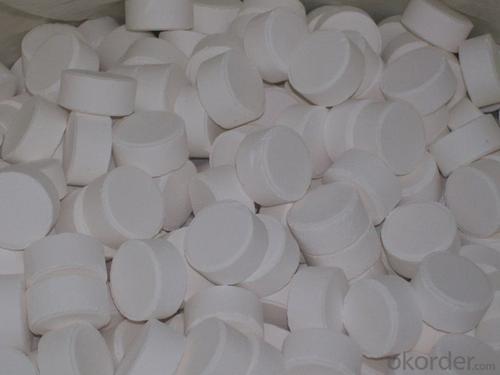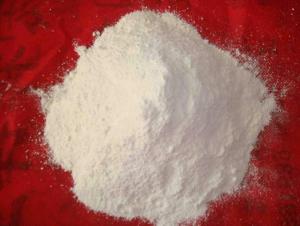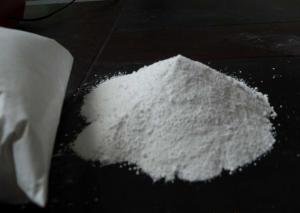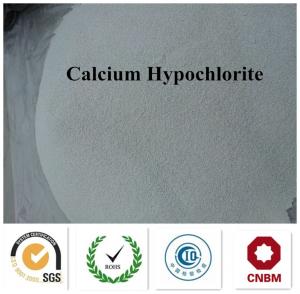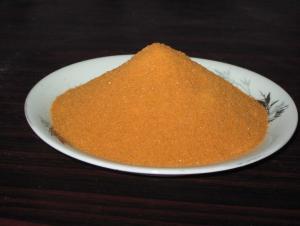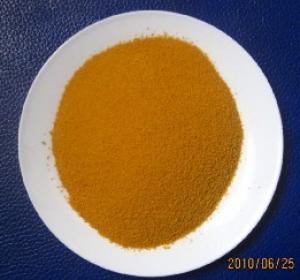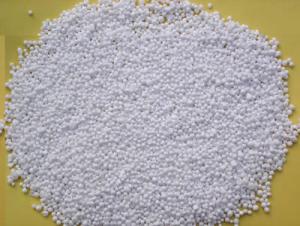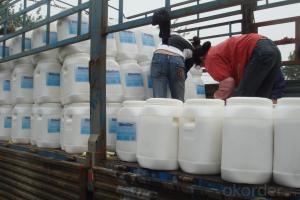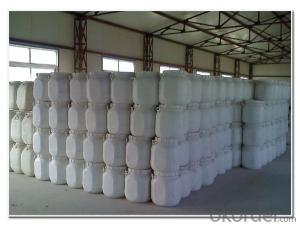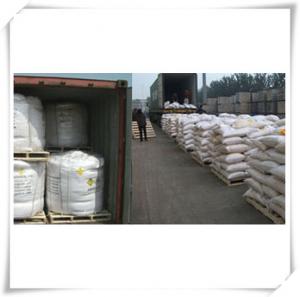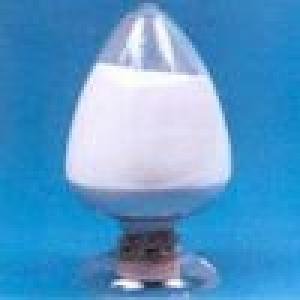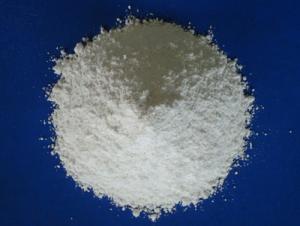Water Treatment Calcium Hypochlorite Granular Powder
- Loading Port:
- Tianjin
- Payment Terms:
- TT OR LC
- Min Order Qty:
- 25 m.t.
- Supply Capability:
- 2000 m.t./month
OKorder Service Pledge
OKorder Financial Service
You Might Also Like
Calcium Hypochlorite
Introduction:
CNBM GROUP is the biggest water Treatment Factory in China. Our Product include: Calcium Hypochlorite, TCCA, SDIC, PAC, Sodium Sulphite, Sodium Thiosulfate etc.
CNBM One year can produce 18,000MT Calcium Hypochlorite with two model, one is 65% and one is 70%. More important we have 3 advantages, Firstly: High effective chlorine content Secondly: Good stability. Can be stored a long time at normal temperature with little chlorine loss; Third:Good solubility, less water-insoluble matters.
Technical Specifications:
Calcium Hypochlorite 65%
Index Name | Top Grade | First Grade |
Chlorine Content ≥ | 65% | 60% |
Moisture ≤ | 3% | 3% |
Yearly Loss of Active Chlorine | 8% | 8% |
Calcium Chloride | 9% | 10% |
Color | White or Light-grey | ----- |
Shape | Power & Granular |
|
Calcium Hypochlorite 70%
Index Name | Top Grade | First Grade | Quality Product |
Chlorine Content ≥ | 70% | 67% | 65% |
Granularity(14-50 mesh)% ≥ | 90 | 87 | 87 |
Moisture % | 5.5~10 |
|
|
Tablets Forms
Weight | 200 gram | 150gram | 100gram | 50gram | 30gram | 20gram | 15gram | 10gram |
Diameter(mm) | 76 | 70 | 50 | 42 | 30 | 30 | 30 | 30 |
Height(mm) | 25 | 21 | 26 | 27 | 22 | 16 | 12 | 8 |
Applications:
1. For bleaching purpose of wood pulp, silk, cloth and fibre.
2. Disinfection and water-treatment.
3. Disinfectant for chemical poisonous and radioactive substance.
Formula Experiment Design: (Base on 1MT Water)
Constitue Dosage
Calcium Hypochlorite 65% 100kg
Disinfection Liquid 1% Calcium Hypochlorite 65% 1.7g
Shipping Containers:
45—50kg Plastic or Steel Drums with Inner Plastic Bag.
Cautions
1. Should be stored in cool and dry warehouse away from heating sources and avoid direct sunlight.
2. In transportation, contact with such should be avoided as sunlight, heating,moisture, organics, oil and acids.
Other Information please check the MSDS.
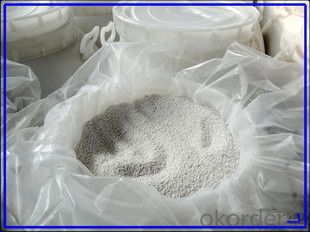
| alcium Hypochlorite, Sodium Process | Calcium Hypochlorite, Calcium Process |
| Trichloroisocyanuric Acid (TCCA) | Sodium Dichloroisocyanurate (SDIC) |
| Sodium Dichloroisocyanurate Dihydrate | Cyanuric Acid (CYA) |
| Sodium Hypochlorite | Sodium Chlorite |
| BCDMH | Aluminum Sulphate |
| Soda Ash Light / Dense | Sodium Bisulphate (NaHSO4) |
| Caustic Soda | Copper Sulphate (CuSO4) |
| Poly Aluminium Chloride (PAC) | Calcium Chloide (CaCl2) |
| Sodium Metabisulfite | Sodium Hydrosulfite |
| Poly Acrylic Acid (PAA) | Sodium Polyacrylate (PAAS) |
| Sodium Nitrate | Calcium Nitrate |
| 1-Hydroxyethylidene-1, 1-Diphosphonic Acid (HEDP) | Amino Trimethylene Phosphonic Acid (ATMP) |
| Copolymer of Maleic and Acylic Acid (MA-AA) | Benzalkonium chloride |
| Sodium Lauryl Ether Sulphate (SLES 70%) | Dodecyl Alkyl Benzene Sulfonic Acid (LABSA 96%) |
- Q: Are fruits and vegetables inactive?
- Inorganic salts are inorganic compounds in the salt, formerly known as minerals, the body has found more than 20 species, including constant elements of iron, zinc, selenium, molybdenum, chromium, cobalt, iodine 8. Apple, pipa, durian, citrus, Watermelon, kumquat, peanuts, I know so much. Oh, there are: lotus lotus which contain inorganic salts
- Q: Inorganic salts play an important role in maintaining the life activities of living organisms. It is mainly in the form of living organisms.
- Inorganic salts are mineral nutrients present in the body and in the food. Most inorganic salts in the cells are present in the form of ions, consisting of organic matter and inorganic compounds.
- Q: How to get an inorganic salt
- Inorganic salts are salts of inorganic compounds, formerly known as minerals. Plant growth needs N, P, K three elements and Ca, Zn, B, Mg, S, Fe and other trace elements. Depending on the type and amount of inorganic salts required for plant life, the water and various proportions of inorganic salts are scientifically formulated into plant nutrient solutions. The method of cultivating plants with plant nutrient solution is called soilless cultivation. The inorganic salts used to prepare the nutrient solution are generally not available for extraction, such as potassium nitrate, calcium nitrate, magnesium sulfate, potassium dihydrogen phosphate, copper sulfate, zinc sulfate and the like, and the reagent may be a chemical fertilizer. The purity of the reagent is high and the impurities of the fertilizer are more. If you can not get it, you can use soil leaching solution (fertile soil plus fresh water, the liquid obtained after filtration), which generally contains a variety of inorganic salts.
- Q: Organic chemistry extraction lab. If the KBr wasn't there I would just add HCl to protonate the NH2, but I'm not sure if that will affect the KBr or the carbon chain. Both of these are in an aqueous phase.
- The amine will certainly coordinate to K+, but the interaction is not very strong and hydrogen bonding from water will compete efficiently. Also, if your amine is soluble in water, you are not going to be able to isolate it by turning it into the corresponding ammonium salt.
- Q: If you boil down salt to a vapor form and breathe it in, can it kill you? or do you have to mix it with another chemical for it to become deadly. (Or will the vapor be so hot it will burn your lungs)
- The boiling point of inorganic salts is extremely high due to the strength of their ionic bonds. The temperatures will kill you.
- Q: An inorganic salt is dissolved in water and yields a solution that has a color. Make a statement about the type of element the substance contains that casuses the color.Thanks!
- Many inorganic salts form colored solutions . pper ( II) sulfate ( Blue ) nickel (II) acetate = green, mangaanse ( II) chloride = pink, iron(III) chloride = yellow, potassium dichromate, orange and so many more Can you be more specific ?
- Q: Is all the inorganic salts in the body related to life activities?
- Sugar is the most important material for the human body, all the activities of the human body, including learning, walking, digestion and breathing, etc., which are the most important substances in the human body. Consumption of energy (about 70%) mainly from the carbohydrates, fat is the body of the energy material, the protein is the basic material of human cells, but also to provide energy, vitamins are neither the main raw material of the organization, nor the supply of energy Material, but it has an important role in the life activities of the human body; inorganic salts constitute an important raw material of human tissue, water is the main component of cells. Which protein, sugar, fat, vitamins can burn for organic matter, and water, inorganic salts can not burn as inorganic.
- Q: Of the dissolved salts found in seawater, _____ % are minor inorganic salts, or trace.
- it's definitly one of these: 99.28 .72 72 50 i think it's 99.28. lemme no if you get it right!!
- Q: Why vegetables and fruits contain rich inorganic salts
- Because they are plants! From the biological point of view, they are the nature of the organic matter into inorganic salt carrier
- Q: Inorganic salt through what way into the human body
- The inorganic salt enters the human body through active transport.
Send your message to us
Water Treatment Calcium Hypochlorite Granular Powder
- Loading Port:
- Tianjin
- Payment Terms:
- TT OR LC
- Min Order Qty:
- 25 m.t.
- Supply Capability:
- 2000 m.t./month
OKorder Service Pledge
OKorder Financial Service
Similar products
Hot products
Hot Searches
Related keywords
